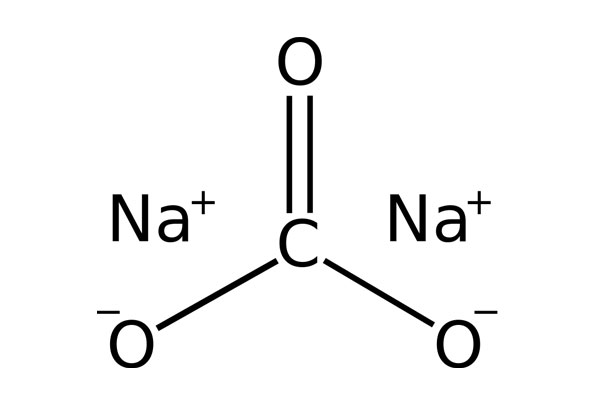Cas No: 497-19-8
EINESC No: 207-838-8
Chemical Formula: Na2Co3
Chemical Structure:
Physical Properties
General Properties: White, solid hygroscopic powder
Odor: Odorless
Intensity: 2.54 g/cm3 (25 °C, Anhydrous)
Boiling point: –
Boiling point: 821 °C (Decompouse at high tempature)
Flash point: –
Vapor pressure: –
Refraction index: –
Solubility (aqueous): 7 gr/100 mL

General Properties
Sodium Carbonate, also known as washing soda, is an inorganic compound that has different hydrates. All of its forms are dissolved by giving alcali solutions in water. It is found in sodium-rich lakebeds or within ashes of some plants in nature. This is why it is known as soda ash. Although it is found in mineral form, it is generally produced industrially. It generates different amounts of hydrates depending on the water it contains.
Production
It can be acquired from both mines and chemical reactions. Although there are different methods for production, Hou process is preferred, nowadays.
Availability
It is mostly used in glass, paper, silk, soap and detergent productons. It makes reaching melting point easy in glass production, it works as fluidity agent for silica.
It is also commonly used to remove hardness in waters. It easly wards off magnesium and calcium in water.
Sodium Carbonate is also a commonly used food ingredient. It works as pH stabilizer. It is also commonly used as anti-coagulent.
Aside from these, it is also used in different fields, mainly textle dyeing, as a cost-efficient and weak alcine.
Security Measures and Toxic Values
Sodium Carbonate is classified as irritant. Its LD50 value is 4090mg/kg. It causes serious vision loss when it contacts with eyes. It is also irritant for skin.